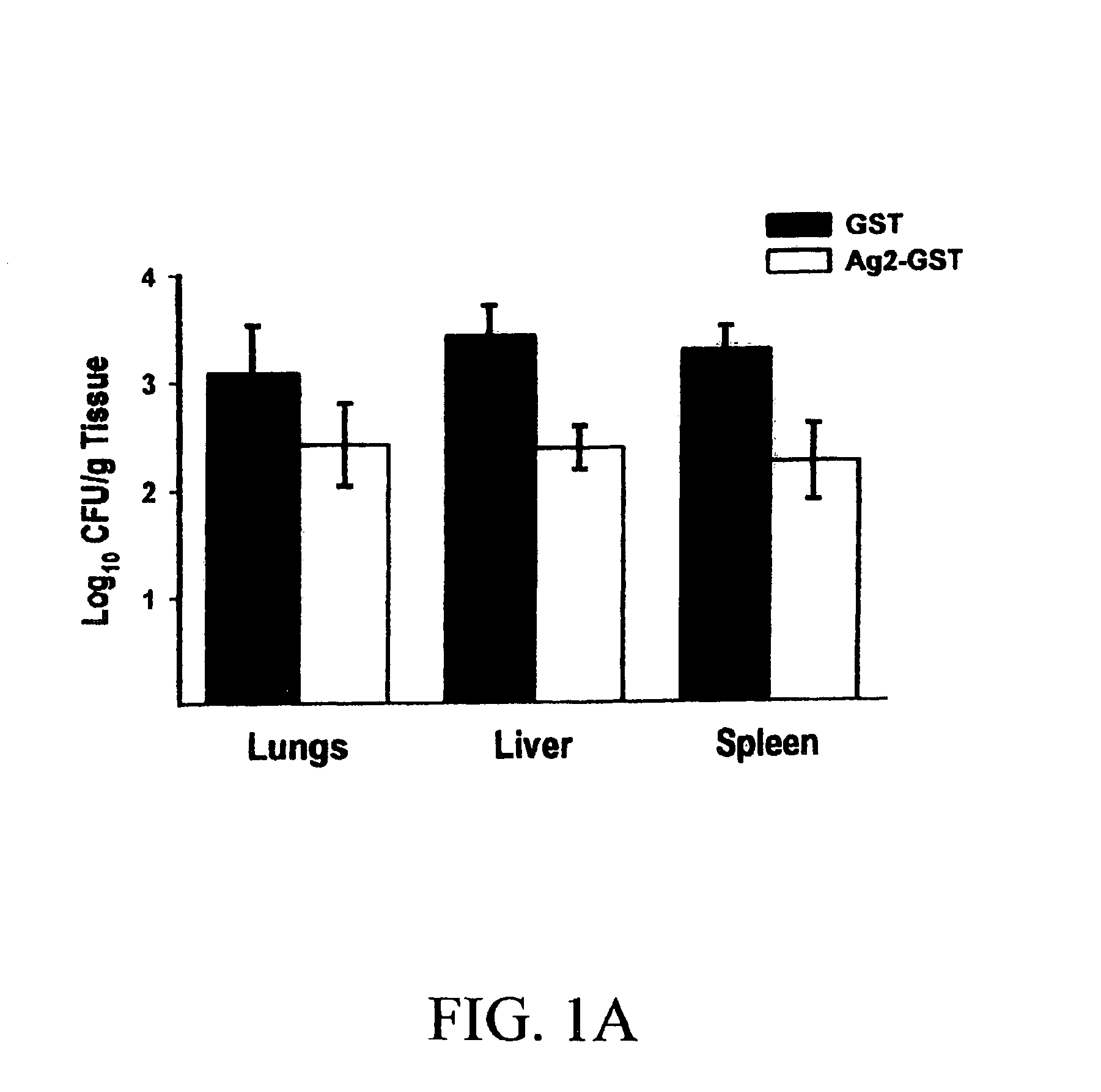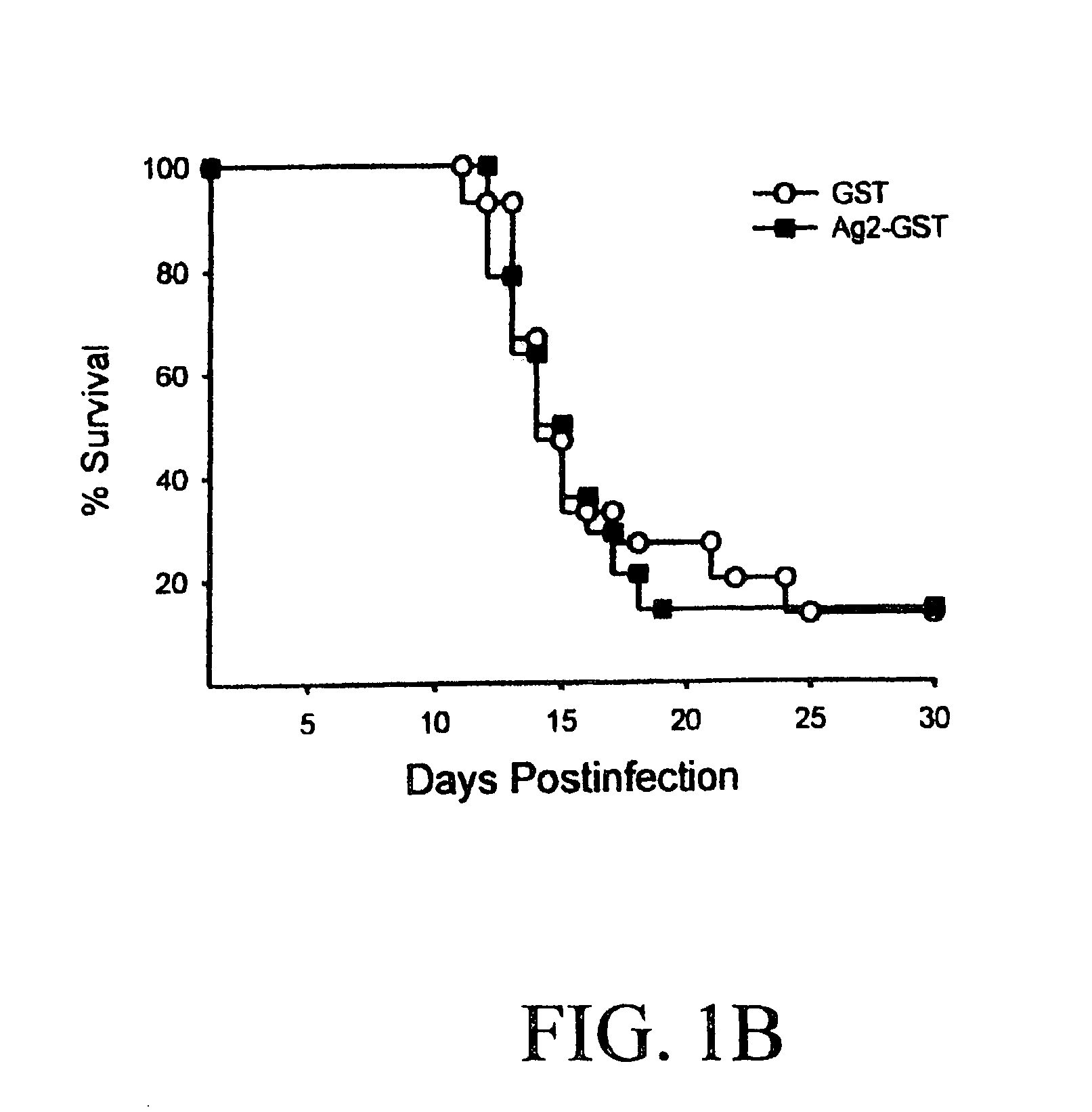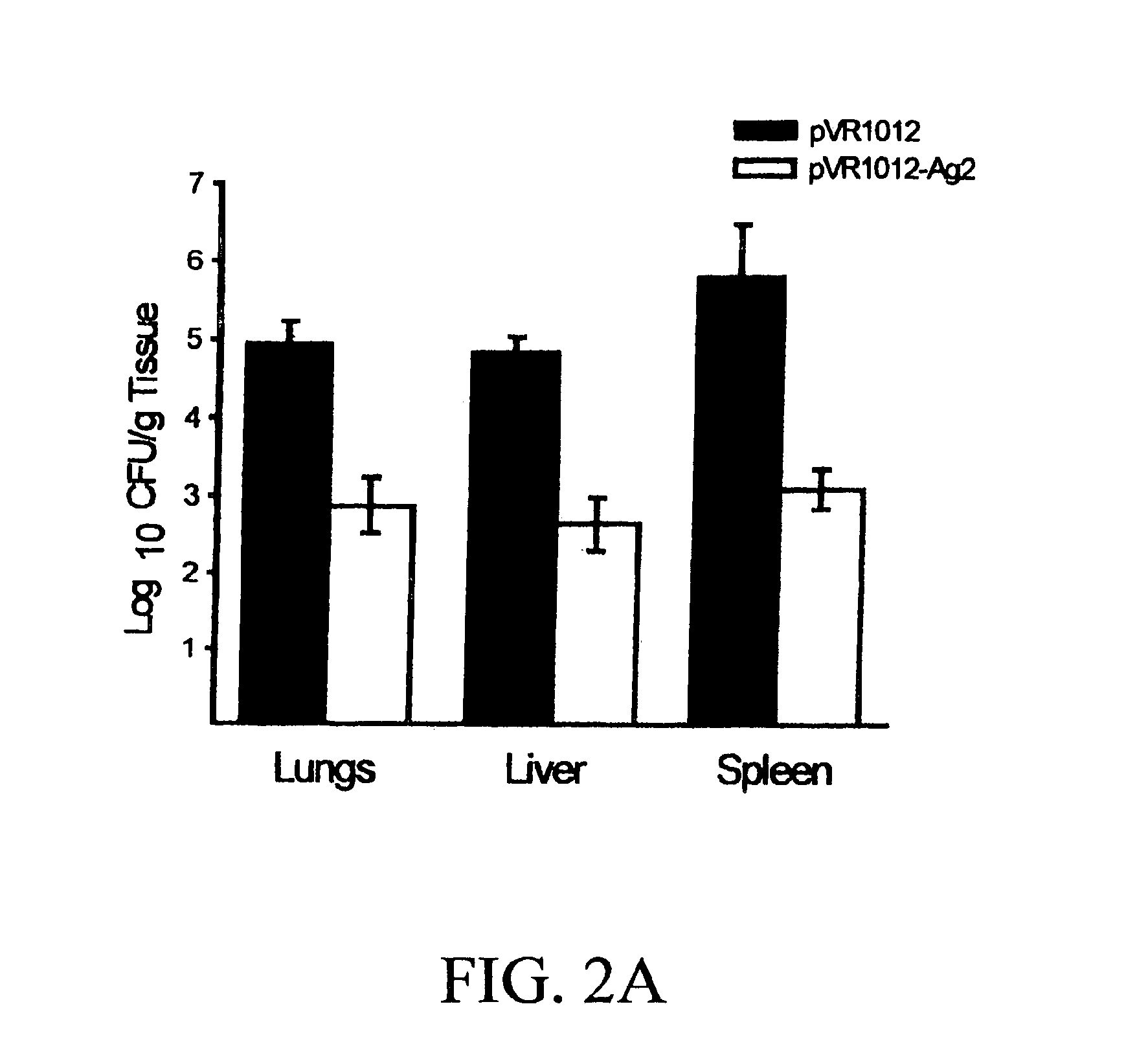Peptide and DNA immunization against Coccidioides immitis infections
a technology of coccidioides and immunization, applied in the field of pathogenic fungi and immunology, can solve the problems of limited treatment methods and problems for those living, and achieve the effect of less labor and more cost-effectiveness
- Summary
- Abstract
- Description
- Claims
- Application Information
AI Technical Summary
Benefits of technology
Problems solved by technology
Method used
Image
Examples
example i
Analysis of Full Length Recombinant Ag2 / PRA as an Immunogen
[0320]The Ag2 / PRA cDNA contains a 582 bp open reading frame that encodes a 19.4 kDA protein (Zhu et al., 1995; 1996b). Ag2 / PRA cDNA was subcloned into the pGEX plasmid and expressed as a glutathione-S-transferase (GST) fusion protein in Escherichia coli (Jiang et al., 1999a; specifically incorporated herein by reference).
[0321]BALB / c mice, which are highly susceptible to C. immitis, were immunized with three weekly injections of 100 μg of the recombinant Ag2 / PRA-GST protein in RIBI adjuvant and then challenged with 250 arthroconidia of C. immitis strain Silveira via the intraperitoneal (i.p.) route. The results established that the Ag2 / PRA-GST recombinant protein induced a significant level of protection as measured by a decrease in the fungal colony forming units (CFU) in the livers and spleens 12 days postinfection as compared with mice receiving the GST peptide alone (p1A). The recombinant Ag2 / PRA did not, however, increa...
example ii
Analysis of Recombinant Ag2 / PRA from Eukaryotic Expression
[0333]The low efficacy of the recombinant Ag2 / PRA-GST fusion protein (Example I) could possibly be explained by the fact that Ag2 / PRA lacks post-translational modification(s). This is scientifically reasonable as native Ag2 / PRA is heavily glycosylated, containing the unusual methylated carbohydrate 3-O-methylmannose (Cole et al, 1985). Consistent with this, the translated Ag2 / PRA cDNA contains 24 potential sites for O-glycosylation (Zhu et al., 1995). The translated Ag2 / PRA cDNA also contains 8 cysteine residues that could be involved in disulfide bond linkages and three sites for phosphorylation. While these post-translational modifications would not bear T cell epitopes, they could be important for imparting a conformational structure that is required for optimal antigen processing or presentation (Jentoft, 1990; Ishioka et al., 1992; Harding et al., 1993).
[0334]Since glycosylation, disulfide bonding, and phosphorylation re...
example iii
Sequence Variation, Kinetics and Prime / Boost Immunizations
[0340]During the course of the foregoing and other studies, it was realized that the Ag2 / PRA (19-194) cDNA construct used in immunization contained five mutations in comparison to SEQ ID NO:3 and SEQ ID NO:4. The site of the mutations, the correct sequences according to the GenBank entry for Ag2 / PRA cDNA (SEQ ID NO:3 and SEQ ID NO:4), the sequence mutations, and their effect are summarized in Table 2.
[0341]
TABLE 2Mutations within 19-194 Ag2 / PRA cDNASiteGenbankMutationEffectLeucine 55CTCCTASilentGlutamic Acid 135GAGGTGValineAlanine 178GCCGACAspartic AcidTyrosine 193TACTGCCysteineStopTAATAGSilent
[0342]Two of the mutations, one in the codon encoding for leucine at 55, and one within the stop codon, are silent, i.e. without any effect in the translated protein. The other three changed the translated sequence, from glutamic acid at 135 to valine, from alanine at 178 to aspartic acid, and from tyrosine at 193 to cysteine. Although ...
PUM
| Property | Measurement | Unit |
|---|---|---|
| time | aaaaa | aaaaa |
| diameters | aaaaa | aaaaa |
| particle size | aaaaa | aaaaa |
Abstract
Description
Claims
Application Information
 Login to View More
Login to View More - R&D
- Intellectual Property
- Life Sciences
- Materials
- Tech Scout
- Unparalleled Data Quality
- Higher Quality Content
- 60% Fewer Hallucinations
Browse by: Latest US Patents, China's latest patents, Technical Efficacy Thesaurus, Application Domain, Technology Topic, Popular Technical Reports.
© 2025 PatSnap. All rights reserved.Legal|Privacy policy|Modern Slavery Act Transparency Statement|Sitemap|About US| Contact US: help@patsnap.com



